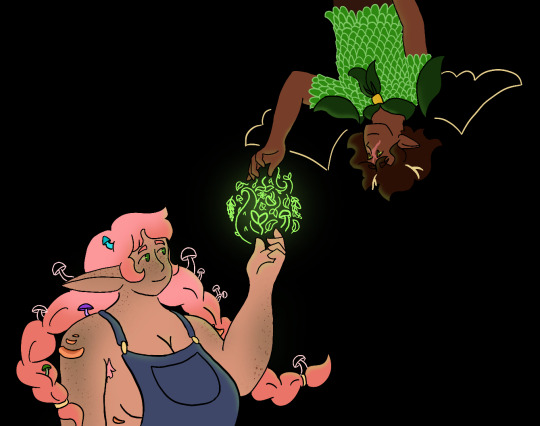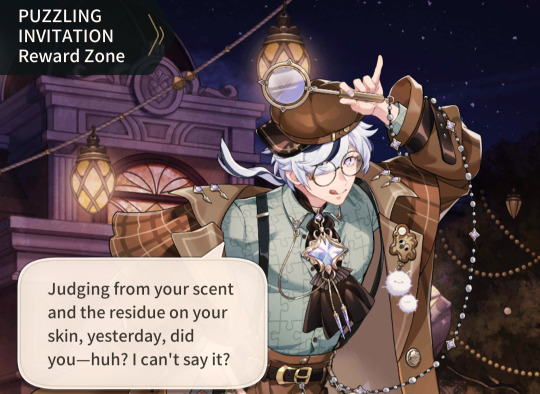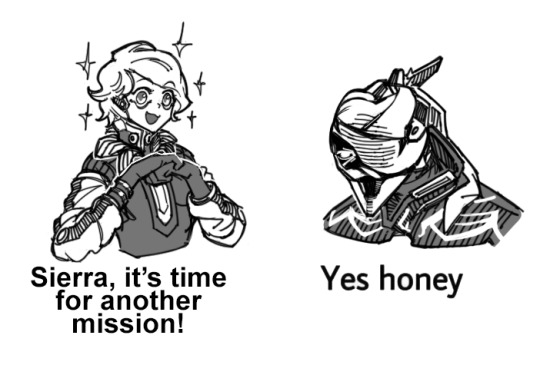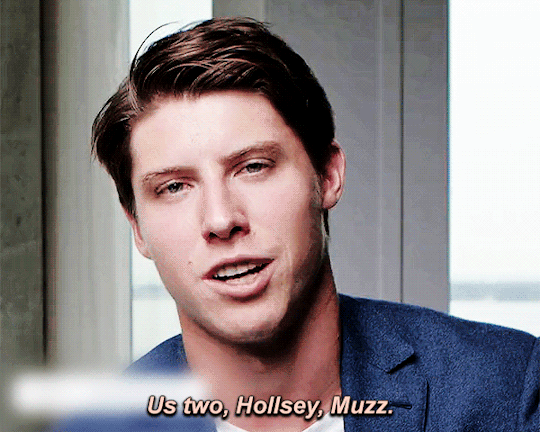#STAT WHAT ARE YOU DOING
Text
I'm generally not a fan of quantifying oppression or looking at it as a scoreboard, but I frequently hear the claim that if you read the data, it will show that trans women are indisputably the most oppressed of all trans people, and isn't comparable to the level of oppression trans men face. And I looked at some data, from the UK's National LGBT Survey (I was referring to it for some data on transheterosexuality so I had it on hand).
The survey included 3,740 trans women and 3,170 trans men.
Being LGBT in the UK:
Average comfort level being LGBT on a scale of 1-5, with 5 being the most satisfied: 3.10 for trans women, 3.15 for trans men
Average life satisfaction on a scale of 1-10, 10 being the most satisfied: 5.07 for trans men, 5.52 for trans women
The data from this survey indicates that similar proportions of trans men and trans women tended to struggle in their overall experiences living as a trans person.
Openness about gender identity
Entirely closeted with friends: 7.4% of trans women, 2.8% of trans men
Entirely closeted with family members that participant lived with: 20.1% of trans women, 14.5% of trans men)
Entirely closeted with family members that participant did not live with: 25.3% of trans women, 22.0% of trans men
Avoiding being open about gender identity for fear of a negative reaction: 58.9% of trans women, 56.2% of trans men
Avoiding being open about gender identity in public premises or buildings: 67.6% of trans women, 62.4% of trans men
Avoiding being open about gender identity on streets or outdoor public places: 68.1% of trans women, 61.8% of trans men
Avoiding being open about gender identity on public transport: 68.7% of trans women, 58.7% of trans men
Avoiding being open about gender identity in neighborhood: 68.5% of trans women, 56.9% of trans men
Avoiding being open about gender identity in workplace: 60.6% of trans women, 53.0% of trans men
Avoiding being open about gender identity in cafes, restaurants, pubs, or clubs: 61.8% of trans women, 57.5% of trans men
Avoiding being open about gender identity in the park: 54.4% of trans women, 46.2% of trans men
Avoiding being open about gender identity in other environments: 9.0% of trans women, 8.9% of trans men
Avoiding being open about gender identity in athletic environments: 63.1% of trans men, 60.2% of trans women
Avoiding being open about gender identity in schools: 45.6% of trans men, 35.1% of trans women
Avoiding being open about gender identity at home: 38.9% of trans men, 32.4% of trans women
The data from this survey indicates that more trans women than trans men tended to struggle with being open about their gender identity.
Transphobia from people the participant lived with
Verbal harassment: 34.0% of trans men, 22.2% of trans women
Outing: 38.5% of trans men, 23.5% of trans women
Threats of violence: 7.0% of trans men, 6.1% of trans women
Coercive/controlling behavior: 25.0% of trans men, 18.2% of trans women
Physical violence: 6.1% of trans men, 4.2% of trans women
Sexual violence: 2.2% of trans men, 2.1% of trans women
Other transphobic incidents: 29.4% of trans men, 18.3% of trans women
The data from this survey indicates that more trans men than trans women tended to struggle with facing transphobia from people they lived with.
Transphobia from people the participant did not live with
Outing: 29.4% of trans men, 24.6% of trans women
Verbal harassment: 42.2% of trans women, 36.0% of trans men
Threats of violence: 13.7% of trans women, 10.5% of trans men
Physical violence: 7.2% of trans women, 5.6% of trans men
Sexual violence: 6.1% of trans women, 3.9% of trans men
Other transphobic incidents: 27.6% of trans women, 25.8% of trans men
Private sexual images shared without consent: 18.5% of trans women, 13.3% of trans men
Had conversion therapy: 5.0% of trans women, 4.1% of trans men
Offered conversion therapy: 9.3% of trans men, 7.6% of trans women
The data from this survey indicates that more trans women than trans men tended to struggle with facing transphobia from people they did not live with.
Experiences in school/educational institutions
Entirely closeted at school: 16.6% of trans women, 9.3% of trans men
Entirely negative reactions at school: 3.6% of trans women, 2.1% of trans men
Entirely positive reactions at school: 28.9% of trans men, 34.7% of trans women
Outing at school: 77.9% of trans men, 62.9% of trans women
Verbal harassment at school: 73.4% of trans women, 70.0% of trans men
Exclusion from activities at school: 31.7% of trans women, 24.3% of trans men
Threats of violence at school: 25.0% of trans women, 19.8% of trans men
Physical violence at school: 15.1% of trans women, 9.6% of trans men
Sexual violence at school: 12.4% of trans women, 5.0% of trans men
Other transphobic incidents at school: 50.0% of trans men, 47.3% of trans women
The data from this survey indicates that more trans women than trans men tended to struggle with being trans in schools/educational institutions.
Workplace experiences
Had a paid job: 56.9% of trans men, 65.3% of trans women
Entirely closeted with senior colleagues: 33.4% of trans men, 31.5% of trans women
Entirely closeted with colleagues at same/lower level: 30.6% of trans men, 26.6% of trans women
Entirely positive reactions in workplace: 34.7% of trans women, 36.3% of trans men
Entirely negative reactions in workplace: 5.1% of trans women, 3.9% of trans men
Outing at work: 59.9% of trans men, 55.5% of trans women
Verbal harassment at work: 49.6% of trans women, 45.6% of trans men
Exclusion from activities at work: 32.7% of trans women, 21.8% of trans men
Threats of violence at work: 9.6% of trans women, 7.7% of trans men
Physical violence at work: 5.5% of trans women, 3.2% of trans men
Sexual violence at work: 7.0% of trans women, 4.0% of trans men
Other transphobic incidents at work: 54.2% of trans men, 53.3% of trans women
The data from this survey indicates that similar proportions of trans women and trans men tended to struggle with being trans in the workplace, with slightly more trans women struggling.
Public healthcare experiences
Needs ignored: 32.3% of trans men, 24.0% of trans women
Avoided treatment for fear of discrimination: 24.3% of trans men, 17.4% of trans women
Inappropriate questions/curiosity from healthcare workers: 29.0% of trans men, 18.9% of trans women
Discrimination from healthcare staff: 14.2% of trans men, 12.6% of trans women
Inappropriate referral to specialist services: 13.8% of trans men, 10.3% of trans women
Unwanted pressure for medical testing: 10.6% of trans men, 8.6% of trans women
Had to change GP: 10.9% of trans men, 9.7% of trans women
The data from this survey indicates that more trans men than trans women tended to struggle with public healthcare.
Mental healthcare experiences
Average ease accessing mental health services, on a scale of 1-5, with 5 being very easy: 2.49 for trans men, 2.55 for trans women
Unsuccessful accessing mental health services: 28.6% of trans women, 27.7% of trans men
Anxious/embarrassed about accessing mental health services: 40.1% of trans men, 29.1% of trans women
Unsupportive mental health practitioner: 17.0% of trans men, 16.9% of trans women
Average mental health service ratings, on a scale of 1-5, with 5 being completely positive: 3.22 for trans men, 3.40 for trans women
The data from this survey indicates that more trans men than trans women tended to struggle with mental healthcare.
Sexual healthcare experiences
Average ease accessing sexual health services, on a scale of 1-5, with 5 being very easy: 3.72 for trans men, 3.75 for trans women
Unsuccessful accessing sexual health services: 14.6% of trans women, 12.3% of trans men
Anxious/embarrassed about sexual health services: 57.3% of trans men, 31.8% of trans women
Unsupportive sexual health practitioner: 15.1% of trans men, 11.9% of trans women
Rating of sexual health services, on a scale of 1-5, with 5 being completely positive: 4.05 for trans men, 4.10 for trans women
The data from this survey indicates that more trans men than trans women tended to struggle with sexual healthcare.
TLDR: According to the data from this survey, the areas in which trans women tended to face more struggles than trans men were in openness about gender identity, transphobia from people they don't live with, and being trans in educational institutions. The areas in which trans men tended to face more struggles than trans women were in transphobia from people they did live with, public healthcare services, mental healthcare services, and sexual healthcare services. Trans men and trans women struggled similarly with being trans in the workplace, and with their overall experience being trans in the UK, with trans women facing slightly more struggles in the workplace.
Obviously, this is only one survey, and doesn't represent all trans people as it was conducted only in the UK. It's possible that another survey might show trans women struggling more in healthcare, or trans men struggling more in schools.
But I would say this is strong evidence that trans women are not necessarily the most oppressed of all trans people by far in all areas of life. Trans men and trans women both face severe oppression, in some similar and some unique ways, and it helps no one to minimize the suffering of either.
Reading Comprehension Questions:
Did OP say that trans men are more oppressed than trans women? (Hint: No)
Did OP say that trans women oppress trans men? (Hint: Also no)
Did OP say that transmisogyny isn't a real issue, or that trans women shouldn't be allowed to talk about transmisogyny? (Hint: No again)
Did OP say that trans men's oppression is more important than trans women's and deserves to be talked about more? (Hint: Still no)
Did OP say that any issues are exclusive to trans men or trans women and that we have no overlap in our struggles? (Hint: You guessed it- no!)
#transmisogyny#anti-transmasculinity#trans#did i hyperfixate on this for like three hours? you can't prove anything fuck you#also apologies for not including nonbinary data in here! the discourse tends to focus on trans men vs women so that's what i addressed#but if i ever get the energy i will def do a follow up on how the stats look for nonbinary respondents
753 notes
·
View notes
Text






Mayerling.
Melissa Hamilton and Rupert Pennefather.
Lauren Cuthbertson and Thiago Soares.
Natalia Osipova and Edward Watson.
Melissa Hamilton and Rupert Pennefather.
Natalia Osipova and Edward Watson.
Sarah Lamb and Steven McRae.
#obsessed#mayerling#ballet#kiss#couple#fave pics#lifts#i’m so glad this is hitting w folks bc this sat in my drafts for months cause i thought this is a post Just For Me and it’ll flop#mostly it sat in my drafts bc i was like what the fuck do i write as a header ‘this one hot kiss lift from mayerling’#in the end i just settled for the ballet title ok everyone knows what this is#you guys are conditioning me to release more pose compilations from my hellish drafts#oh and one more thing... ice dance interpretation of this lift WHEN? i need a mayerling ice dance program stat please#1k#kenneth macmillan#pose compilation
17K notes
·
View notes
Text
House M.D. but it's when Wilson says House's name
#house md#james wilson#prince's talk tag#finally!!! it's done! this and the house version took almost two weeks to do#first off thank you to the clinic-duty team on livejournal for making the transcripts for these episodes#because this video would be near impossible to make without their clear transcripts. I hope y'all are doing well#ive been reading a lot of fics with these two and i see how the authors have the characters refer to each other in their fics#and that got me wondering how much do they say each other's name in the show and how do they refer to each other#since this is the wilson video ill put his stats here#s1 was 11 times s2 was 18 s3 was 45 s4 was 32 s5 was 41 s6 was 60 s7 was 47 and s8 was 48#in total he says his name 302 times. Mostly refers to him just by House#the only time I've heard him say his first name its when he's being professional or when he's really angry (and that one time he proposed)#and even then it's always the full name not just the first name#the only instance I've seen him use just his first name was on that note he put on House's xmas gift that we see in season 5#and as much as I wanted to put that moment in here he never actually says the contents of the note out loud so i had to leave it out#but what surprised me was he says House's name more than House says his name#especially when the earlier seasons didn't have him say his name as much
1K notes
·
View notes
Text
DP x DC Prompt: Chilly
Danny doesn't feel the cold at least not natural cold. Sure, sometimes when his Core acted up he would feel cold but the weather in the Mortal World couldn't reach that level of cold with the closest thing being space, and even then it wasn't that close to the chill of an Ice Core. This made it easier for Danny to travel light after things went South in Amity Park because he didn't have to worry about packing heavy coats or thick blankets. Just a jacket, a spare change of clothes, a phone and charger. This worked best for him.
Unfortunately he didn't consider how this may look to people, especially when weather reached record lows in Gotham City, snow reached record highs, and people were looking concerned. But nobody looked more concerned than a guy with a red motorcycle helmet and more corrupted ectoplasm in his system than was probably helpful.
#dp x dc prompt#dc x dp prompt#Jason is worried about this damn kid#But Danny really just wants to get some sleep#“What do you mean you can't feel the cold?!” “It's not a big deal it's normal.“ ”IT'S NOT NORMAL!“#Jason is about to adopt Danny or call Dick to do it#Get this kid some hot cocoa and a blanket stat.#my prompts
2K notes
·
View notes
Text

posting a kremy every single day until new episodes of OUAW are out DAY 34
#he doesnt even need his high charisma stat he can just do that and he's clean of all charges guaranteed#what are you gonna do arrest an alligator? look at him#once upon a witchlight#legends of avantris#kremy lecroux#daily kremy
369 notes
·
View notes
Note
Hi Cass! Wanted to spread the word about a video coming out on the 7th from Saberspark about RotTMNT. Lots of people are thinking that this might get the show back on Nickelodeon's radar!
I work at the studio. So I personally believe the thing that brings a show back to life is money. Not fanart or reviews. If the studio realizes that Rise can bring in money, they'll bring it back. It's simple. You want to save Rise, buy official merch and subscriptions to services that show it

#I know this sounds sad but#the people who have the power to cancel or revive any show don't usually look at fandom stuff#they look at income stats and general rating#if you wanna make them do what you want#speak with them in a language they understand
925 notes
·
View notes
Text
The danger is clear and present: COVID isn’t merely a respiratory illness; it’s a multi-dimensional threat impacting brain function, attacking almost all of the body’s organs, producing elevated risks of all kinds, and weakening our ability to fight off other diseases. Reinfections are thought to produce cumulative risks, and Long COVID is on the rise. Unfortunately, Long COVID is now being considered a long-term chronic illness — something many people will never fully recover from.
Dr. Phillip Alvelda, a former program manager in DARPA’s Biological Technologies Office that pioneered the synthetic biology industry and the development of mRNA vaccine technology, is the founder of Medio Labs, a COVID diagnostic testing company. He has stepped forward as a strong critic of government COVID management, accusing health agencies of inadequacy and even deception. Alvelda is pushing for accountability and immediate action to tackle Long COVID and fend off future pandemics with stronger public health strategies.
Contrary to public belief, he warns, COVID is not like the flu. New variants evolve much faster, making annual shots inadequate. He believes that if things continue as they are, with new COVID variants emerging and reinfections happening rapidly, the majority of Americans may eventually grapple with some form of Long COVID.
Let’s repeat that: At the current rate of infection, most Americans may get Long COVID.
[...]
LP: A recent JAMA study found that US adults with Long COVID are more prone to depression and anxiety – and they’re struggling to afford treatment. Given the virus’s impact on the brain, I guess the link to mental health issues isn’t surprising.
PA: There are all kinds of weird things going on that could be related to COVID’s cognitive effects. I’ll give you an example. We’ve noticed since the start of the pandemic that accidents are increasing. A report published by TRIP, a transportation research nonprofit, found that traffic fatalities in California increased by 22% from 2019 to 2022. They also found the likelihood of being killed in a traffic crash increased by 28% over that period. Other data, like studies from the National Highway Traffic Safety Administration, came to similar conclusions, reporting that traffic fatalities hit a 16-year high across the country in 2021. The TRIP report also looked at traffic fatalities on a national level and found that traffic fatalities increased by 19%.
LP: What role might COVID play?
PA: Research points to the various ways COVID attacks the brain. Some people who have been infected have suffered motor control damage, and that could be a factor in car crashes. News is beginning to emerge about other ways COVID impacts driving. For example, in Ireland, a driver’s COVID-related brain fog was linked to a crash that killed an elderly couple.
Damage from COVID could be affecting people who are flying our planes, too. We’ve had pilots that had to quit because they couldn’t control the airplanes anymore. We know that medical events among U.S. military pilots were shown to have risen over 1,700% from 2019 to 2022, which the Pentagon attributes to the virus.
[...]
LP: You’ve criticized the track record of the CDC and the WHO – particularly their stubborn denial that COVID is airborne.
PA: They knew the dangers of airborne transmission but refused to admit it for too long. They were warned repeatedly by scientists who studied aerosols. They instituted protections for themselves and for their kids against airborne transmission, but they didn’t tell the rest of us to do that.
[...]
LP: How would you grade Biden on how he’s handled the pandemic?
PA: I’d give him an F. In some ways, he fails worse than Trump because more people have actually died from COVID on his watch than on Trump’s, though blame has to be shared with Republican governors and legislators who picked ideological fights opposing things like responsible masking, testing, vaccination, and ventilation improvements for partisan reasons. Biden’s administration has continued to promote the false idea that the vaccine is all that is needed, perpetuating the notion that the pandemic is over and you don’t need to do anything about it. Biden stopped the funding for surveillance and he stopped the funding for renewing vaccine advancement research. Trump allowed 400,000 people to die unnecessarily. The Biden administration policies have allowed more than 800,000 to 900,000 and counting.
[...]
LP: The situation with bird flu is certainly getting more concerning with the CDC confirming that a third person in the U.S. has tested positive after being exposed to infected cows.
PA: Unfortunately, we’re repeating many of the same mistakes because we now know that the bird flu has made the jump to several species. The most important one now, of course, is the dairy cows. The dairy farmers have been refusing to let the government come in and inspect and test the cows. A team from Ohio State tested milk from a supermarket and found that 50% of the milk they tested was positive for bird flu viral particles.
[...]
PA: There’s a serious risk now in allowing the virus to freely evolve within the cow population. Each cow acts as a breeding ground for countless genetic mutations, potentially leading to strains capable of jumping to other species. If any of those countless genetic experiments within each cow prove successful in developing a strain transmissible to humans, we could face another pandemic – only this one could have a 58% death rate. Did you see the movie “Contagion?” It was remarkably accurate in its apocalyptic nature. And that virus only had a 20% death rate. If the bird flu makes the jump to human-to-human transition with even half of its current lethality, that would be disastrous.
#sars cov 2#covid 19#h5n1#bird flu#articles#long covid is def a global issue not just for those in the us and most countries aren't doing much better#regardless of how much lower the mortality rate for h5n1 may or may not become if/when it becomes transmissible between humans#having bird flu infect a population the majority of whose immune system has been decimated by sars2#to the point where the average person seems to have a hard time fighting off the common cold etc...#(see the stats of whooping cough/pertussis and how they're off the CHARTS this yr in the uk and aus compared to previous yrs?#in qld average no of cases was 242 over prev 4 yrs - there have been /3783/ diagnosed as of june 9 this yr and that's just in one state.#there's a severe shortage of meds for kids in aus bc of the demand and some parents visit +10 pharmacies w/o any luck)#well.#let's just say that i miss the days when ph orgs etc adhered to the precautionary principle and were criticised for 'overreacting'#bc nothing overly terrible happened in the end (often thanks to their so-called 'overreaction')#now to simply acknowledge the reality of an obviously worsening situation is to be accused of 'fearmongering'#🤷♂️#also putting long covid and bird flu aside for a sec:#one of the wildest things that everyone seems to overlook that conor browne and others on twt have been saying for yrs#is that the effects of the covid pandemic extend far beyond the direct impacts of being infected by the virus itself#we know sars2 rips apart immune system+attacks organs. that in effect makes one more susceptible to other viruses/bacterial infections etc#that in turn creates increased demand for healthcare services for all kinds of carers and medications#modern medicine and technology allows us to provide often effective and necessary treatment for all kinds of ailments#but what if there's not enough to go around? what happens when the demand is so high that it can't be provided fast enough -- or at all?#(that's assuming you can even afford it)#what happens when doctors and nurses and other healthcare workers keep quitting due to burnout from increased patients and/or illness#because they themselves do not live in a separate reality and are not any more sheltered from the effects of constant infection/reinfection#of sars2 and increased susceptibility to other illnesses/diseases than the rest of the world?#this is the 'new normal' that's being cultivated (the effects of which are already blatantly obvious if you're paying attention)#and importantly: it. doesn't. have. to. be. this. way.
279 notes
·
View notes
Text

THE ULTIMATE ORIGINAL CHARACTER STAT SHEET
download || soundtrack template || more edits
Annnnnd she actually delivers for once!! Here's the completed stat sheet, free to use by anyone! I wanted a dnd esq sheet but for non dnd characters, so here you go. Drop me a tag so I can see what y'all do with it if ya want, and happy editing!
Typefaces Used: headings = "Blackout", general text = "Mimi"
tag list (ask to be added or removed): @bbrocklesnar @carrionsflower @risingsh0t @statichvm @marivenah @confidentandgood @unholymilf @florbelles @thedeadthree @simonxriley @shellibisshe @roofgeese @aezyrraeshh @faerune @tekehu @arklay @jackiesarch @zevlor @minaharkers @captmactavish @carlosoliveiraa @rosenfey @queennymeria @shadowglens @nokstella @nightbloodbix @heroofpenamstan @fenharel @alexxmason @malefiicarum @rolangf @gwynbleidd @delzinrowe
#my edits#oc stats*#my templates*#oc edits#might make more of my edit templates public....?#idk#if people want them then by all means!#also you can just download this image if you want to#and just write over it/print it#i plan on printing this for each of my kids#so yes that would be a lot of printing lmao#but itll be worth it#anyway i hope yall enjoy!#i wanna see what yall do with it!
160 notes
·
View notes
Text


where would i be without the wisdom of the crick? / where would i be without pelor's light?
[ID: A digital illustration of Beverly and Moonshine from naddpod on a black background. They're drawn in opposite orientations, so that when Beverly is right side up, Moonshine is upside down. Both of them have a hand raised towards the center, where bright green outlines of plants and mushrooms sprout in the space between their hands. They're both looking towards the plants, smiling softly.
The first illustration has Moonshine oriented upright. She is a crick elf with tan skin and freckles, and long hair in twin braids that is a gradient from pink to orange. She wears a pair of dark blue overalls, and mushrooms sprout from her skin and hair. The outlines of various mushrooms, drawn in light pink, sprout from her into the darkness.
The second illustration has Beverly oriented upright. He is a halfling with brown skin and a large x-shaped scar across his face. He has short, fluffy, dark brown hair. He's wearing light green scale mail, with dark green shoulder pauldrons and a handkerchief tied around his neck. The outlines of a pair of wings sprout from his shoulders, and he has small antlers poking through his hair, both drawn in light yellow.]
a @naddpodgifting treat for @quicklings!
#naddpod#naddpodgifting#moonshine cybin#beverly toegold#em! hi! i was trying to think of what to do for you#and then i saw bev and moonshine in your list on the spreadsheet and i blacked out#i hope you enjoy them!!#i've had so much fun with timestamping/stat insanity and talking about this podcast with you <3#han doodles
146 notes
·
View notes
Text

let him speak
#glances sidelong at eiden#i mean... i guess he has a point#if blade were to state the stats every time eiden did something#well. blade would just never shut up. there would be no secrets. eiden's a marathon runner#and blade will know from a glance exactly what he got up to#judging from the minute particles of hair or skin or RESI D U E S LEFT ON EITO#but like actually that would be really funny#if clan goes on a group field trip and eiden's doing something different with a different person every night#and blade's greeting every morning at breakfast is just a summary of last night's events#some will stop him from speaking#but most will probably go 👂🌾🦻 (at different intensity levels)#ya think blade has a DNA database of every clan member?#you don't need those pseudoscientific touchscreen data monitors like in the police investigation shows#you just need blade.#and he has everyone's fingerprints/hair/skin/genetic code/body scent molecules on file#puzzling invitation#nu carnival blade
77 notes
·
View notes
Text

Being mained by your own Tenno probably means you don't get as many breaks as you'd like
...I think my Mesa's long overdue for a vacation
#warframe#warframe oc#mesa#operator#mesa sierra#operator tala#I got 3 fully forma'd and fully sharded mesas in my arsenal; one being non-prime. all with umbral polarities. send help#i love making quirky builds with her though KLSGDSKLDGDLGKS#one of my favorites is sneaking banish on her when im playing with friends and someone plays limbo#so they think it's limbo's fault when they get banished#or thermal sunder so I can be the squad's discount spicy fissure fairy#you have no idea how excited I am to see the new shards colors' stats to see what I can do with 'em
134 notes
·
View notes
Text
#Moon posting#One Piece#You know what. Let's just do this for the hell of it#And FOR SCIENCE!#I was deeply tempted to title this something like ''Did OP make you trans'' or ''Did the OP Transgenderism Beam get you''#But I wanted to be sure people actually understood the question so the Very Scientific Results come in clean#I'm just deeply curious about the numbers and the stats
63 notes
·
View notes
Text
youtube
hey hey nudge nudge i bring you animation go watch
#my sanity stat is very low now time to sleep for 20 hours#my art#desert duo#3rd life#last life#double life#limited life#trafficblr#grian#goodtimeswithscar#it was not meant as shipping but i mean do what you want the lyrics are kinda yknow#animation
191 notes
·
View notes
Note
what do you think about the newest penacony story patch in hsr?
penacony numero uno. actually the best arc out of the 3 so far but sunday should kill himself*
#*i cant beat the boss what else is fuckinggggg new 🚬#im typing this after my idk 4-6th attempt#the fact that you cant do the world level thing like you can in genshin is ass#bailus healing annoys me and gallagher...is actually pretty good for the fight i was worried taking him in but he does p well#i hate complaining about the difficulty of the game cause the reality is that im just not a stats guy and only vaguely understand how#everything goes. im better at an open world beat the shit outta everything game like genshin but i like sr more </3#and theres so few imaginary characters. DIE#aventurine and luocha were really good but either didnt care or was saving for someone else and im paying the PRICE#asks#anon#anyways ueah penacony fire story. gallagher and misha u are the world 🫶🏾#also it just looks really good all the maps are so nice looking#the characters are enjoyable i like how everyone plays a part and i actually cared about the story#star rail spoilers#b4 i got to the part ingame i saw mishas va on twitter give a lil thank you and i was like hes deeefinitely dying lmaoo#it was a nice ending for those 2 though bittersweet. im glad misha did get to experience the astral express even if it wasnt the one we kne#mhy
38 notes
·
View notes
Text





PrimeVideoCA: Mitch Marner and Auston Matthews sound off on which @MapleLeafs players make the cut in a round of Yearbook Superlatives.
#toronto maple leafs#auston matthews#mitch marner#2122#hockeyedit#egifs#jholl am34 underrated pair fmlkdsj realer than expected#the me you comes out so fucking easy....... like if they dont give each other constant validation they will literlly die...#us two..... its the collective bro. every time they talk or operate or do anything. i feel ill#cured myself of my own crazy rn#justin holl#jake muzzin#they genuienly couldnt even film them in the same frame for fear of what might happen (also covid but-)#im gonna need that leaf to leaf stat
102 notes
·
View notes
Text
I came up with maybe not a theory but more of just an observation that the east blue 5 seem to parallel the 5 love languages and it's kinda reframed all of their actions and behaviours towards each other so much for me on my watchthrough. Got brainworms from that one oda interview where he said zoro doesn't like verbally expressing gratitude and prefers to show appreciation through actions and it got me thinking
The 5 languages:
Physical touch - Luffy
Acts of service - Zoro
Quality time - Usopp
Receiving / giving gifts - Nami
Words of affirmation - Sanji
Funnily enough in OPLA we definitely see a lot of physical touch Luffy. He's always playfully punching or hugging crewmates, despite having known the crew for such a short time he's just instantly clingy and physically present around them in east blue.
Zoro is very much an actions person. He's a little emotionally constipated and doesn't verbalise his feelings very much, in fact that seems like the last thing he wants to do, but he will always be looking out for any member of the crew silently, and is almost always the first to spring into action when it's called for. He shows he cares through acts of service and being there for his captain and crew.
Usopps language being quality time is shown pretty well in syrup village with his relationship with Kaya. Kaya is a girl who has everything she could wish for financially, but ussop provides her with a much needed friend, someone to support her and just physically be present and talk to her. He risks so much just to make her smile because being there for his friends is such a crucial and important thing for him.
Nami's love language being giving/recieving gifts means so much to me because it is so often seen as the most shallow of the love languages and I have seen so many poor analysis and digs at Nami's character, reducing her to just being greedy and money hungry. Did they watch Arlong park with their eyes closed??? For Nami, gold or money is a means for her to provide for the people she cares about, to ensure their financial stability and freedom and to keep her crewmates fed and afloat. She spent so long scorned and alone and (believed she was) hated because she created this money hungry persona to save her village and to best Arlong. Every piece of gold she bled to get was meant for that end goal. Nami deserves the financial freedom and gold that being a strawhat pirate could give because for years and years every bit she earned was tucked away for the well-being of others and was then stolen from under her nose. (This paragraph got very long but I'm not sorry I am the captain of the Nami defense squad.)
And finally Sanji reflects words of praise as a love language. I think it's the most clear to see with how Sanji is so quick to praise any female character he comes into contact with, especially Nami, but I think it also reflects his strained relationship with zef while working at the baratie. Zeff is always verbally critical of Sanji as a way to rile him up and to encourage him to leave the restaurant. Zef weaponises what makes Sanji tick to antagonise him and tries to get him to leave that way, but Sanji is far too stubborn and feels too great a debt to leave.
I think east blue definitely shows the 5 dynamics in a pretty clear way and kinda helped me understand what makes the characters tick. Also why some of the characters end up butting heads or getting into arguments. They all show and recieve love in different way, sometimes there are misunderstandings or clashes but at the end of the day they all trust each other with their lives and it's such a strong bond.
Anyways I'll eventually draw some more OP but I'd love to hear any thoughts or other people's ideas if they have any on the matter. Sometimes I get analysis brainworms, and I first shared the idea on discord, but figured why not post it to Tumblr too
ALSO please if anyone has examples from the series that fit the love languages PLEASE share it, makes my heart oougggghhghg.
#one piece#east blue#op theory#love language#romance dawn#like you dont understand every time any of the east blue 5 do something that coincides with their pseudo assigned love language#ouggghhhhhaaaaaghhh my HEART#they care about each other so much#and they show it in different ways but they still mean it#anyways please share ur thoughts#im 300 episodes in so idk how long this checks out for#but its still pretty solid#idk what nico robin would be#im leaning towards quality time maybe#cause shes been alone for so long waaaaaaaah#i love her she needs a hug#luffy get on it stat
140 notes
·
View notes